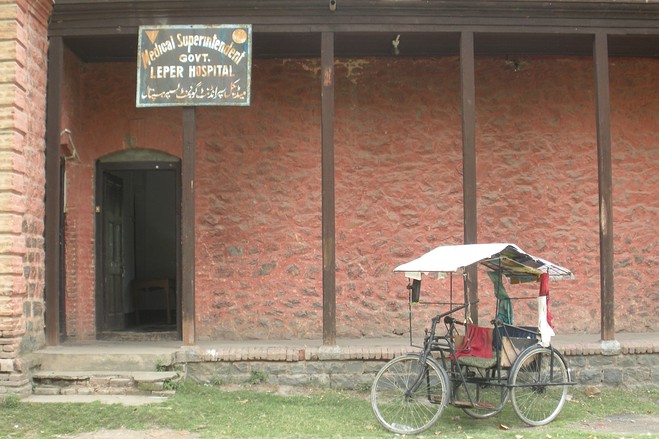
Recently serious concern was expressed by some senior doctors and doctors’ associations regarding the shortage of clofazimine, a drug urgently needed in the treatment of leprosy. The shortage is confined to private hospitals but nevertheless is affecting the treatment of many leprosy patients who need multi-drug combination treatment and the absence of one key drug adversely affects the overall treatment. (Concern over shortage of leprosy drug in private sector, The Hindu, July 1, report by Bindu Shajan Perappadan).
Other reports have spoken of shortage of surgeons with specialized skills for leprosy related surgeries in the country, despite the fact that almost 60 Per cent of the new cases of leprosy are being reported from India.
This would appear to be a strange situation considering that over 16 years back, on December 31 2005, the Government of India had declared leprosy eliminated as a public health problem in India. This was a highly controversial decision that has come to haunt all efforts relating to leprosy since then.
As Manoj Verma, a senior health worker associated with the treatment of leprosy for several years, had told this writer some years after this, “A serious health problem cannot be solved merely by eliminating it in government papers. When we see increasing number of cases, even new cases in villages, how can we accept the government’s claim?”
Dr. Anurag Bhargava and Dr. Biswaroop Chatterjee write in a paper, “The Elimination of Leprosy as a Public Health Problems in India – The Truth Behind the Myth’, “The whole strategy of elimination was based on unrealistic targets, entirely questionable assumptions and evidence which had invited …. criticism, skepticism and opposition. The International Federation of anti-Leprosy Associations in fact raised several issues about the elimination strategy….. The campaign for leprosy’s elimination in India is without parallel for its violation of scientific and ethical norms.”
The background to this decision was that around year 2000 international pressures had started accumulating that India should make such an announcement of elimination of leprosy so that a wider announcement at the world level could also be made. This would help in cutting expenses both in India and abroad, and also boost the ‘tourism’ image of India.
The original idea of ‘elimination of leprosy’ was changed to ‘elimination of leprosy as a public health problem. In this highly arbitrary exercise, a norm of less than 1 case per 10000 population was fixed.
The next step was to issue several directives which would make it possible to show lesser number of leprosy cases on registers with or without any actual decrease. Conditions having no justification were enforced, for example separating patients who don’t have voters’ card! In numerous ways, officials went ahead to show that the target of less than 1 leprosy case per 10000 population had been achieved by the end of 2005 and on this basis an announcement of elimination was made on December 31, 2005. It was a clear case of tailor-made statistics, or data to fit a decision that had already been taken. This was confirmed by a survey taken up some time earlier in Agra which showed a very high prevalence rate.
Somewhat similar exercises to hide the actual prevalence of the disease were seen in some other countries as well. Several experts condemned this effort in various countries. P. Feenstra said, “Over the last years, the elimination target has become more and more a political target (rather) than an epidemiological or program quality target. For many the indicator – the prevalence of patients registered for treatment – has become the goal in itself, and the actual goal – reduction of leprosy transmission and incidence – has practically got out sight.”
B. Naafs warned in a paper titled ‘Treatment of Leprosy, Science or Politics’ that spread of the myth about elimination will “jeopardies adequate leprosy control and treatments.”
What is most important now is that harm done to the treatment and identification effort should be undone. Remedial action should be taken up on the basis of urgency, so that research on leprosy, identification of new cases and proper treatment get high priority keeping in view the real needs of patients.
As a result of the declared elimination as a public health problem, this disease had suffered in priority at education level also so that now a shortage of surgeons for leprosy related surgeries is being seen.
To undo the harm done by neglect, a special drive to detect new cases was launched for 20 days in 2016 in the course of which 20,000 new cases were detected. During 2019-20 115,000 cases were detected followed by 65,000 next year. However the official number is known to exclude many patients who are treated in private hospitals and clinics. The Indian Association for Dermatologists recently stated that 125,000 new patients of leprosy are being reported every year in India. Nearly 60% of new world cases are being reported every year from India.
A wider lesson to be learnt is that undue hurry in unrealistically declaring elimination of a disease can be counter-productive as this leads to neglect of the disease at least for some years and in the course of this period the battle against the disease can become very weak. Any official declaration should be based on the real situation and not on any exaggerated claims of success already achieved.
Bharat Dogra is Honorary Convener, Campaign to Save Earth Now. His recent books include A Day in 2071, Navjeevan and India’s Quest for Sustainable Farming and Healthy Food.











































